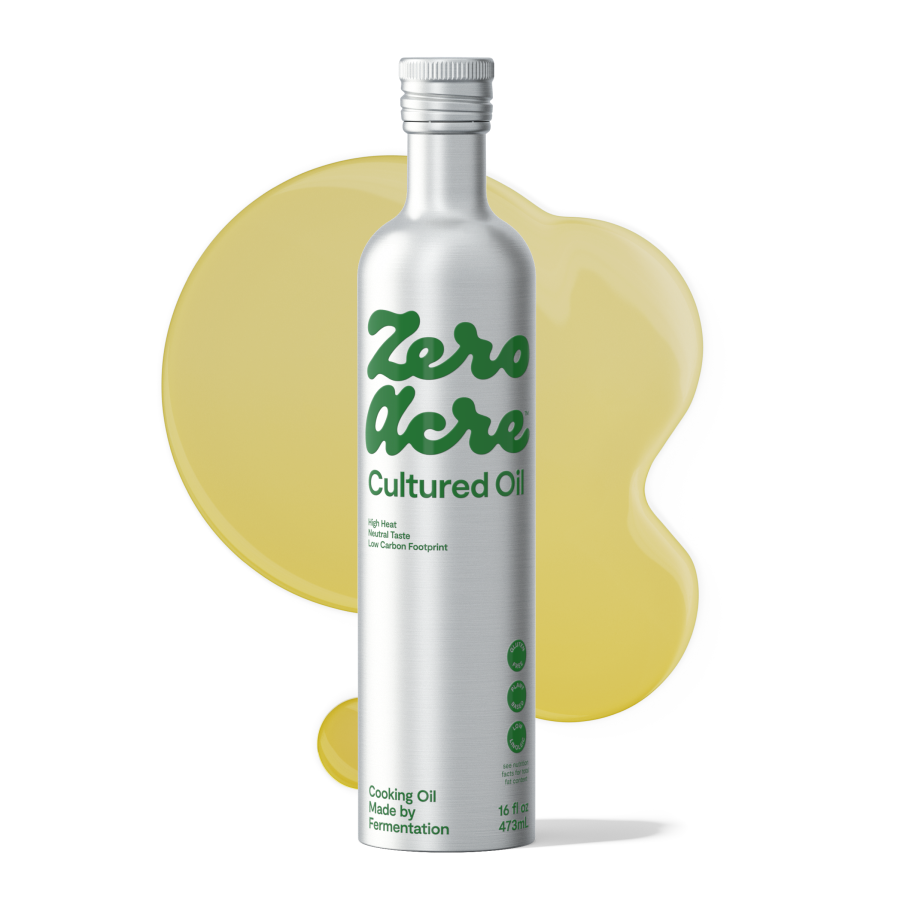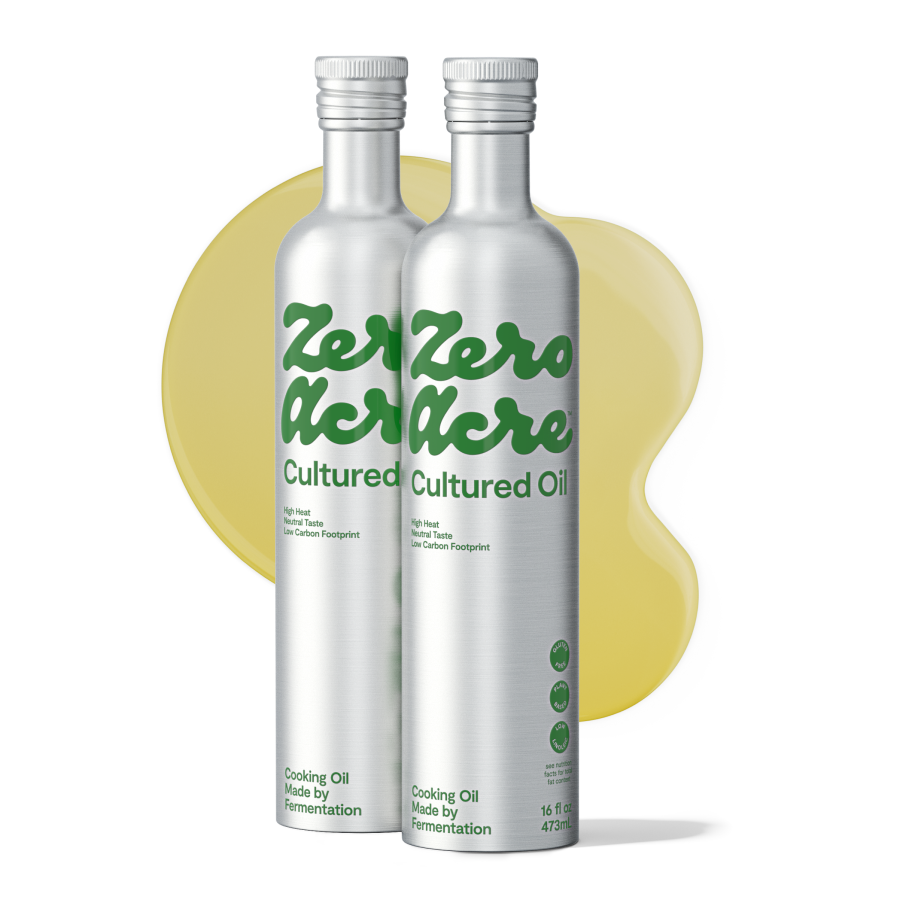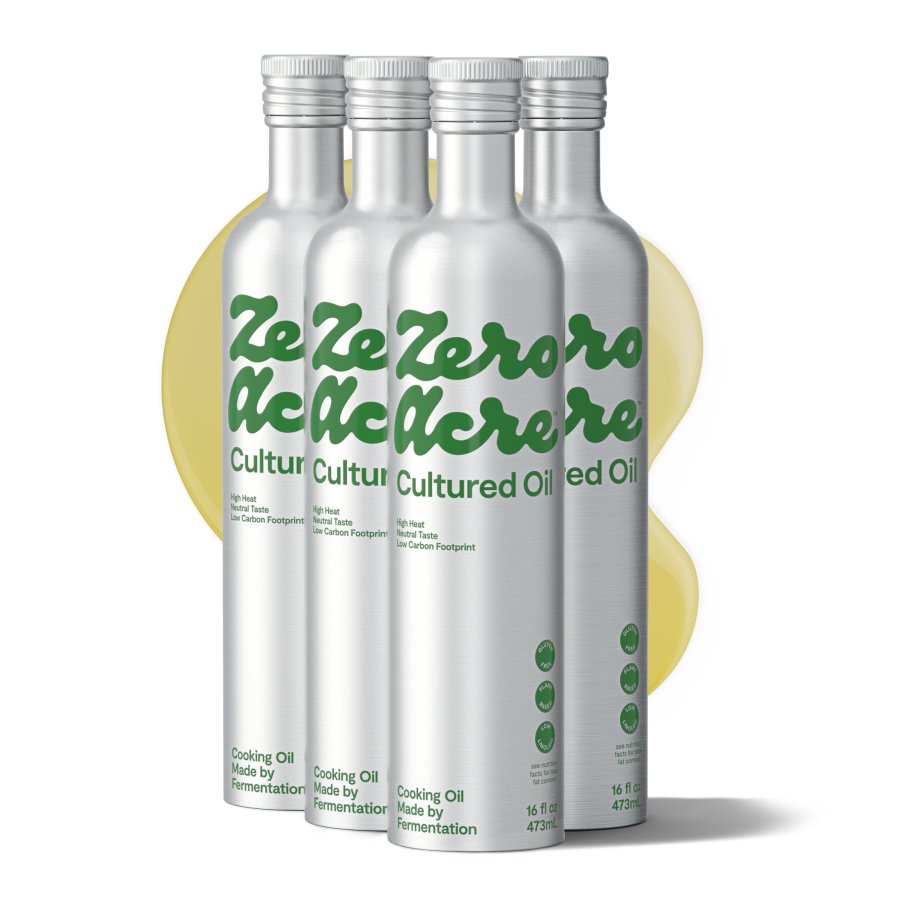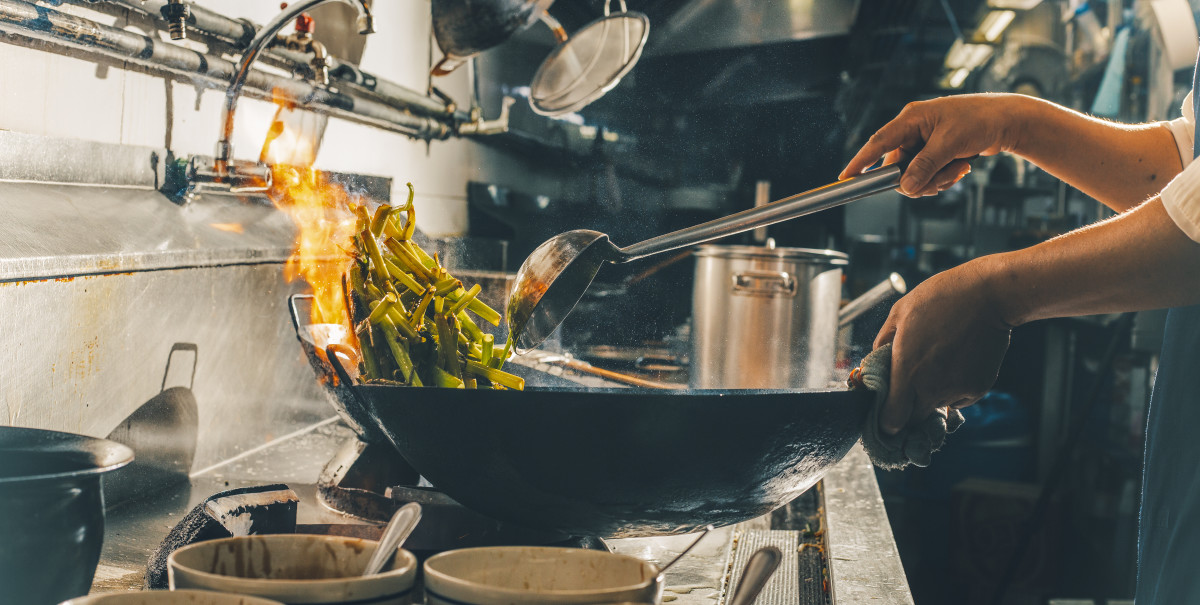WRITTEN BY: Corey Nelson
Article at a Glance
If your cooking oil smokes, it’s an indicator that your oil is getting too hot.
Overheating cooking oils creates undesirable flavors and harmful byproducts.
If you're cooking at 350-400°F or higher, choose an oil with a high smoke point.
Along with smoke points, also consider thermal stability and fatty acid content when choosing oils.
Cooking oils high in polyunsaturated fats have the worst thermal stability as well as other downsides.
Introduction
You may have noticed that throwing some butter in a pan at high heat generates a different reaction than avocado oil. After a short time, it’s likely that the butter will start to smoke and turn brown, while avocado oil stays clear and won’t smoke until it sizzles for a few minutes.
The amount of heat it takes for a fat to smoke is called its smoke point, and every cooking oil and fat has a different range. Knowing the smoke point of an oil can make the difference between a perfectly cooked meal, and one that tastes burned and contains some harmful chemical byproducts.
This article covers the smoke points of common cooking oils, why there’s so much incorrect data surrounding smoke points, and other science-backed information to help you choose the best cooking oil every time.
What Is Smoke Point?
An oil's smoke point is the temperature at which it begins to smoke visibly when heated. Chefs and home cooks often use smoke point information to determine whether a given cooking oil is appropriate for sauteing, pan-frying, or deep-frying foods.
In most cases, a smoke point represents the absolute upper limit of the usable temperature range of an oil. In other words, the smoke point of an oil is the maximum temperature, and you should avoid heating it past that point whenever possible.
If your cooking oil starts smoking, that's a sure sign that you're using too much heat. This can ruin the flavor of your favorite dishes and trigger the smoke alarm in your kitchen. But even worse — overheating certain oils can create harmful compounds in your food that can negatively affect your health [*].
Overheating certain oils can actually create byproducts such as acrylamides, toxic aldehydes, hydroxylinoleate, free radicals, and trans fats [*,*]. Another adverse effect of using too much heat is generating cooking oil fumes that can increase the risk of lung cancer [*].
But smoke points have several limitations when it comes to choosing the right oil for cooking. One significant issue is that some oils, especially those high in omega-6 polyunsaturated fats, are highly unstable and begin to break down well before they start smoking visibly. That means that some cooking oils can have relatively high smoke points but still aren't suitable for high-heat cooking.
Also, kitchens are uncontrolled environments, unlike laboratories. The smoke point of an oil is very much dependent on how you store your oil, and if the oil is subjected to heat, light, moisture, and many other environmental variables [*]. Therefore, compared to accurate smoke points measured by scientists, the results you experience in your kitchen can vary.
Factors That Affect Smoke Point
The smoke points of common dietary fats range from as low as 300°F all the way up to nearly 500°F. Factors that contribute to these differences include sedimentation (solids left over from processing) and free fatty acid (FFA) content [*]. An oil's thermal stability also affects flavor and other properties when the oil is heated [*].
Sediment refers to non-fat solids contained in cooking oil. Unrefined oils contain more sediment compared to refined oils. These solids begin to smoke at lower temperatures than pure fats or oils, and as a result, lower the smoke point of oils when present.
In other words, most unrefined or "virgin" oils aren't great choices for high-heat cooking. They smoke at lower temperatures than their refined counterparts.
Free fatty acid (FFA) content is another factor behind smoke points. Most fatty acids in cooking oils are in triglyceride form, but slowly break down into FFAs. FFAs in cooking oils are less stable than fatty acids in the triglyceride form, and also smoke at lower temperatures [*].
The FFA content of different oils increase when they are heated [*]. This is why reusing cooking oil is a bad idea. Each time you reheat it, the smoke point decreases and the oil becomes less heat-stable.
Storage is another factor that can affect FFA levels. Buying quality oil and storing it properly (out of direct light, at room temperature) keeps FFAs in check.
Why Most Smoke Point Data Is Wrong
This may be surprising if you regularly browse recipe websites that confidently throw smoke point figures around: most smoke points listed online are incorrect. And some of them are totally fabricated.
Many websites reference the Wikipedia "Smoke point" article, which has a large table listing several dozen oils with their smoke points:
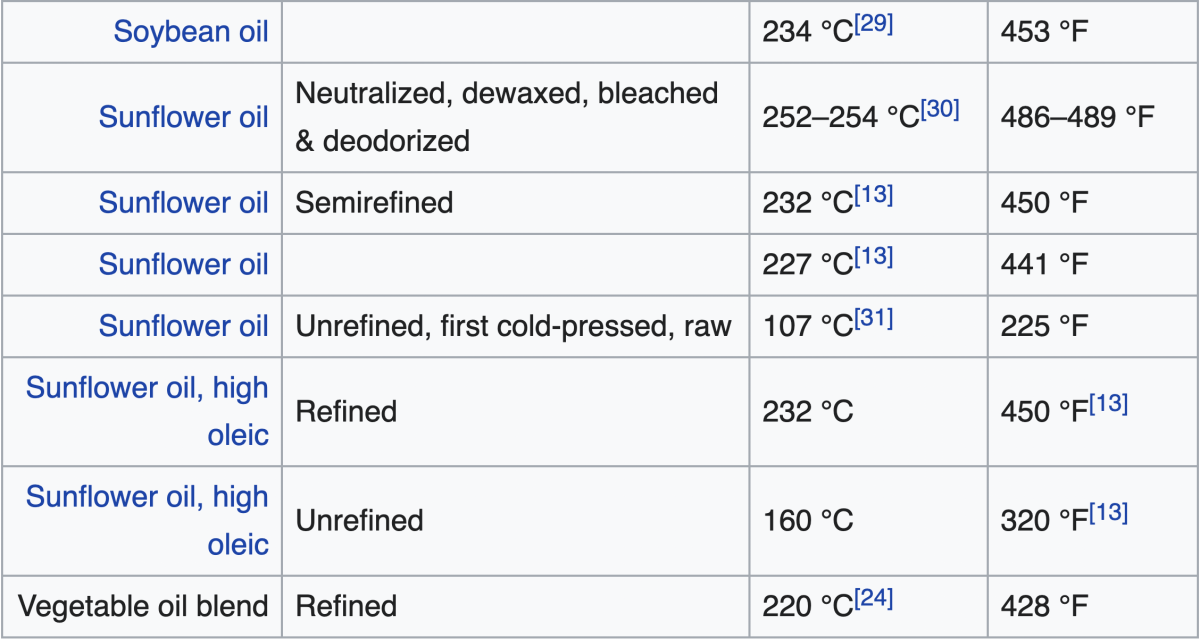
Most websites get their smoke point information from Wikipedia's smoke point table [*].
The only problem? Most of the references used in the Wikipedia article aren't scientific sources, and many of their citations go to an article hosted on a website that isn't credible and doesn't cite any studies, either.
Other popular websites don't cite sources, either, and often even make up their own smoke points. As a result, most smoke point data on cooking and recipe websites is unreliable.
This article uses the best available information on smoke points from credible sources like Bailey's Industrial Oil and Fat Products, 6th ed. (2005) and other reference materials. These sources are generally expensive to access and don't tend to show up in search results.
Next, we'll cover why oil smoke point isn't the only factor to consider for high-heat cooking.
Smoke Point vs. Thermal Stability
Smoke point isn't the same thing as heat stability. While it may seem intuitively true that oils with higher smoke points should be better for high-heat cooking, this often isn't the case.
Thermal stability or heat stability is how slowly or quickly a cooking oil breaks down when heated [*]. And it doesn't relate directly to an oil's smoke point, but rather to the fatty acid composition of an oil.
Of the common types of fatty acids, saturated fats are the most heat-stable, followed by monounsaturated fats, while polyunsaturated fats are the least heat-stable [*].
For a simple illustration of how this works in the kitchen, we'll compare these popular cooking oils:
Extra virgin olive oil, predominantly monounsaturated fat (up to 83%), with a typical smoke point range of 350-406°F [*]
Soybean oil, predominantly polyunsaturated fat (55%), with a typical smoke point range of 400-450°F [*]
If you only looked at the smoke points, you might think that olive oil is a poor choice for high-heat cooking and soybean oil is a perfect high-heat choice, but that's actually not the case at all.
Olive oil is a perfect example of how you need more data besides smoke points to understand the thermal properties of cooking oils.
In reality, at typical high-heat cooking ranges of 350-400°F, olive oil is much more resilient than soybean oil. It's high in stable monounsaturated fats and polyphenol antioxidants (while soybean oil contains lots of unstable polyunsaturated fats that will break down easily) [*,*].
When you're choosing oils, be sure to keep in mind heat stability, not just smoke point. And remember to avoid seed oils high in unstable polyunsaturated fats.
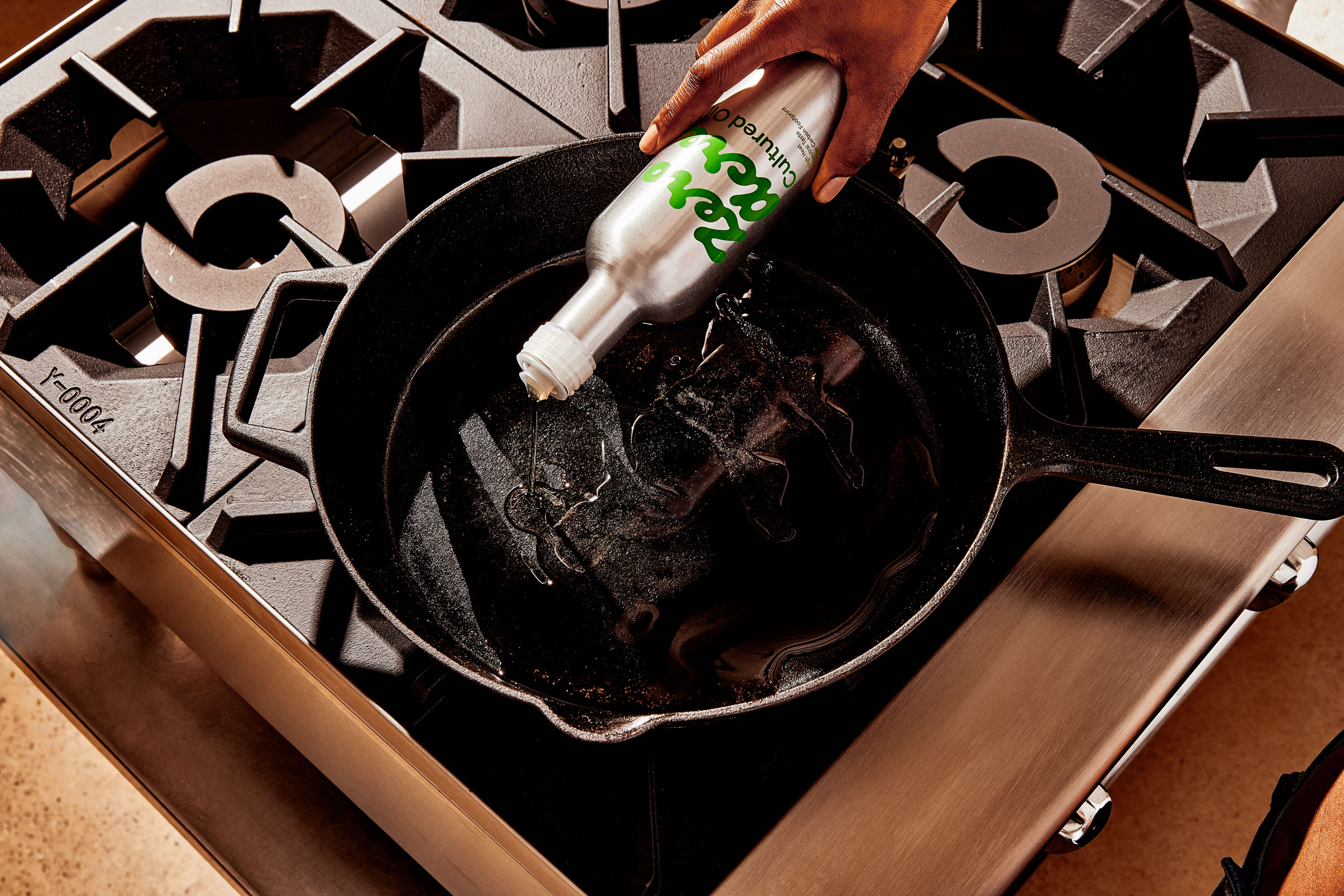

Finally, an all-purpose alternative with a clean taste and the most healthy fats—even more than olive oil!
How to Choose the Right Cooking Oils
When you're shopping for healthy cooking oils, keep these considerations in mind:
The temperature ranges you're using for cooking
The fatty acid content and health effects of each oil
The flavors and other culinary characteristics of oils
First, when you're cooking at relatively low temperatures — such as most baking and sauteing — you don't need to worry about heat stability. But if you're grilling, broiling, or deep-frying, you need an oil that can withstand temperatures of 400°F or higher.
Remember that smoke point is one factor to consider, but thermal stability is also important.
That brings us to fatty acid content: saturated fats are the most stable, monounsaturated fats are also stable for high-heat cooking, and polyunsaturated fats are the least stable.
Polyunsaturated fats are also inflammatory and may be associated with the rise in chronic illness. Minimizing your omega-6 linoleic acid intake is a wise health decision, and avoiding seed oils is one of the best ways to do this.
Finally, the type of oil you use can affect the taste of your dishes. Some fats like butter, lard, bacon fat, or olive oil have distinct flavors. While some dishes call for the flavor of bacon fat or the grassy taste of olive oil, other meals require something more flavor-neutral and you’ll want to choose accordingly.
Smoke Points of Popular Cooking Oils

Frequently Asked Questions (FAQs) About Cooking Oil and Smoke Points
What Are High Smoke Point Cooking Oils?
The cooking oils with the highest smoke points are Zero Acre oil (up to 485°F) and avocado oil (up to 482°F), while olive oil (up to 406°F) is considered moderate. Other vegetable oils have moderate smoke points around 400 ºF or higher. These include olive, peanut, cottonseed, rice bran, corn, soybean, safflower, and grapeseed oil. Ghee or clarified butter, while not considered a cooking oil, clocks in with a smoke point of around 482°F.
Along with smoke points, the thermal stability of oils is also important for health and cooking safety. Avoiding seed oils high in polyunsaturated fats is an easy way to ensure your cooking oils have good thermal stability.
What Does a High Smoke Point Mean?
A high smoke point means your cooking oil won't smoke at normal cooking temperatures. Any oil with a smoke point of 480°F or higher has a high smoke point. Oils with high smoke points and good thermal stability are excellent choices for high-heat cooking.
What Are Low Smoke Point Cooking Oils?
Cooking oils that smoke below 400 degrees Fahrenheit are low smoke point oils. Some oils with significant amounts of solid sediment (like butter or unrefined plant oils), or high free fatty acid content, have a low smoke point of around 300-400°F.
As long as you're not using high heat, there's nothing wrong with cooking with butter or unrefined oils. But if you are using high temperatures, use an oil with a smoke point of 400-450°F or higher (like Zero Acre oil or avocado oil), and be sure you store it out of direct light and at room temperature to keep it from breaking down.
What Happens at the Smoke Point?
The smoke point of cooking oil is the temperature at which oil begins to smoke visibly. In other words, when you hit the smoke point, your oil is burning! This is bad news for flavor — and also releases harmful byproducts into your food and the air during cooking.
Does Smoke Point Matter?
Yes, smoke point matters. But the smoke point doesn't tell the whole story when it comes to taste and health. You've also got to consider thermal stability (how stable a particular oil is when it's heated).
For example, olive oil has very good thermal stability, even though its maximum smoke point is around 406°F. That’s because it's high in monounsaturated fats and antioxidants [*,*]. On the other hand, soybean oil has a smoke point of up to 450°F but has poor thermal stability, making it an inferior choice for high-heat cooking [*].
What Is the Healthiest Oil to Cook With?
For general-purpose cooking, you need an oil with a high smoke point and good thermal stability that's also low in polyunsaturated fats. Zero Acre oil boasts a sky-high smoke point of up to 485°F and contains less than 3% linoleic acid. It also has a neutral taste so you can use it in pretty much everything. Other options include avocado oil, olive oil, and coconut oil.
Does Olive Oil Have a High Smoke Point?
Olive oil's smoke point ranges from 350-406°F depending on the batch, so it's not necessarily a high smoke point cooking oil. However, research shows that it's got good thermal stability. It's lower in linoleic acid, and high in monounsaturated fats and antioxidants, which makes it a much better choice than most vegetable oils [*,*].
According to the UC Davis Olive Oil Center, certain olive oils can have a smoke point as high as 464ºF, although most most sources cite lower ranges [*].
What Is the Best Oil for Deep Frying?
The best oils for deep frying include avocado oil, olive oil, and Zero Acre oil. Solid fats like coconut oil, ghee, lard, and tallow may also work for deep frying. These cooking oils and fats have appropriately high smoke points, good or excellent thermal stability, and are low in inflammatory unhealthy omega-6 polyunsaturated fats.
What Oil Do Restaurants Use for Frying?
Nearly all restaurants use seed oils like soybean oil, sunflower oil, peanut oil, or corn oil for frying. They're the most popular choice because they're readily available, inexpensive, and neutral-tasting. Unfortunately, seed oils are also high in polyunsaturated linoleic acid, which is linked with health issues like obesity, heart disease, cancer, and more.
Is It Healthy to Reuse Frying Oil?
Reusing frying oil is a terrible idea, especially if you're cooking with unstable polyunsaturated fats. After just 30 minutes, toxic byproducts in omega-6 oils increase ten-fold as fatty acids break down [*]. Even worse, research shows that most restaurants reuse oil dozens or hundreds of times [*].
It might seem economical to reuse frying oil, but it's not worth the adverse health effects. If you enjoy fried foods, make them at home with appropriate frying oils instead of buying them at restaurants.
The Takeaway
Smoke points are a helpful starting point, but they're far from the only factor to consider when you're selecting cooking oil. An oil's smoke point doesn't tell the full story.
In general, the best cooking oils contain relatively low amounts of sediment (leftover solids that smoke when heated) and low levels of unstable polyunsaturated fats.
To find the right oil for your recipe, consider the temperature range you'll be using so you can choose an oil with an appropriate smoke point and thermal stability.
Seed oils high in polyunsaturated fats are unstable when heated. Even though several seed oils have smoke points of around 450°F, they're not suitable for use as cooking oils — the polyunsaturated fats break down and release harmful byproducts into foods and the air.
For high-heat cooking, always choose an oil with a smoke point of 480°F or higher and excellent thermal stability, like Zero Acre oil.
